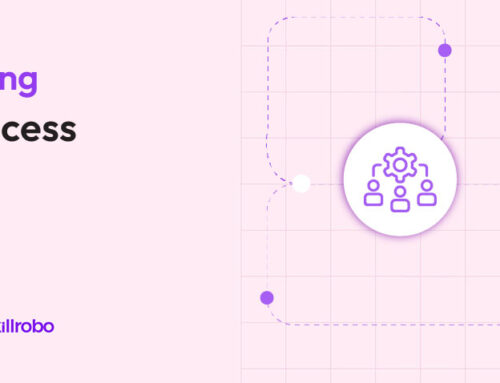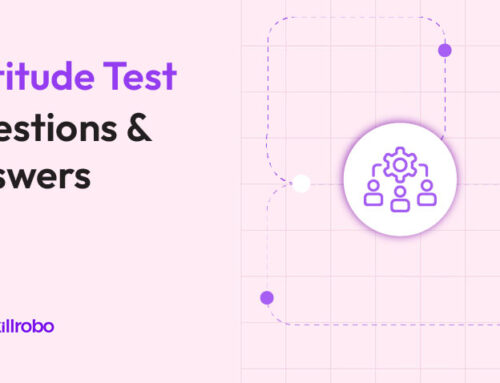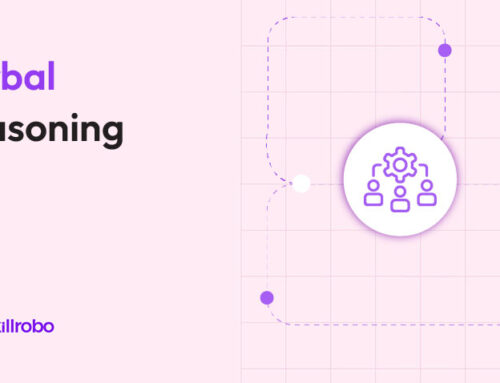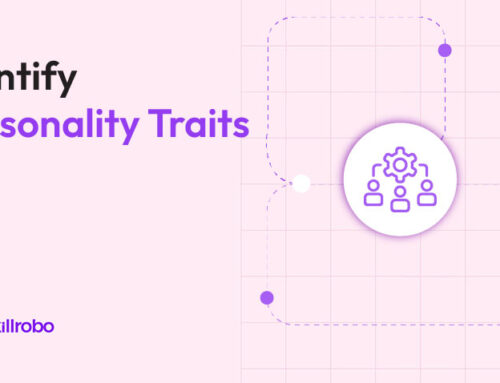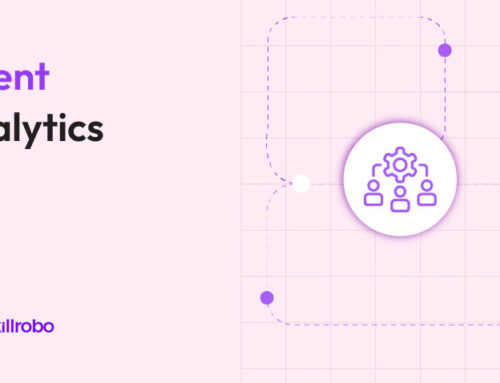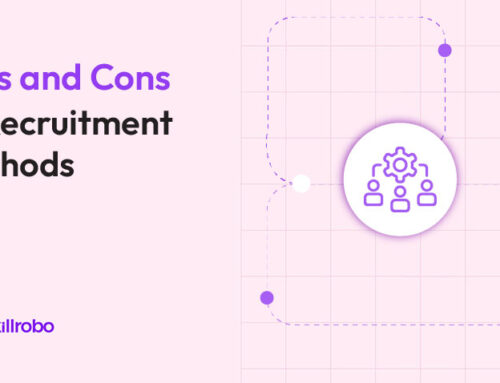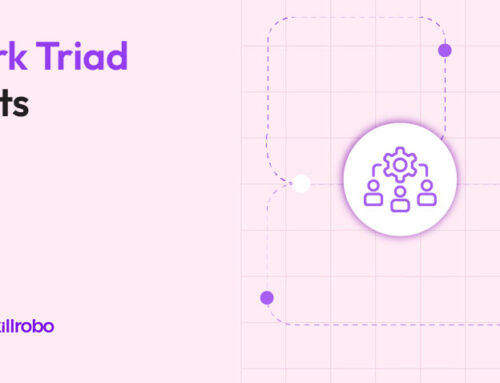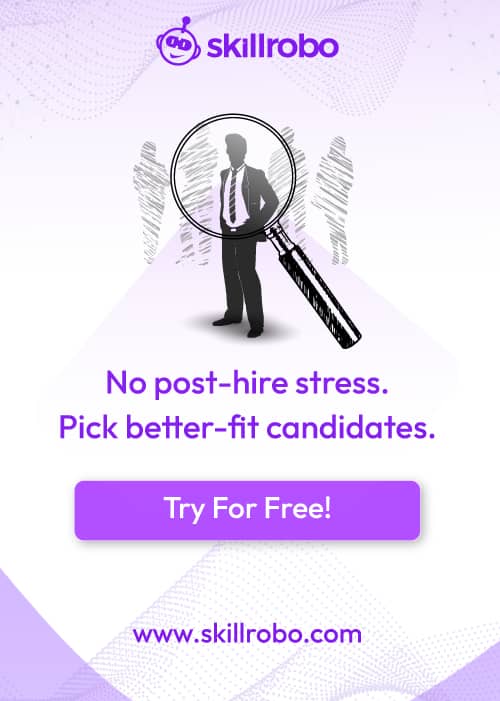Table of Contents
Related articles

Good quality recruitment is backed by informed hiring decisions based on recruitment data. Streamlining the recruitment process requires identification and monitoring of recruitment metrics to identify potential areas for improvement. The use of enterprise recruitment assessment tools helps improve the success and efficiency of the recruitment process.
Measuring the Effectiveness of the Recruitment Process
Keeping track of key recruitment metrics helps assess the effectiveness of the process. What are recruitment metrics? Recruitment metrics are key data points gathered at different stages of the recruitment process.
Some of the key metrics that help in the assessment of the recruitment process are time to hire, interviews to hire ratio, candidate conversion rates, and proceed rates.
1. Time to Hire: this recruitment metric throws light on the duration taken to fill job posts. Time to hire or time to fill is measured by how long job posts are left unfilled. Longer the time to hire, sooner the candidates lose interest in taking up the job. Lengthy and cumbersome job application forms, prolonging the interview process or cancelling the interview call are some of the reasons that frustrate potential candidates.
2. Quality of hire: the quality of hire depends on several factors like cultural fit, candidate productivity, etc. The retention levels amongst most recent hires is a good indication of the quality of hire.
3. Source of hire: focusing on hiring sources that turn in the most qualified candidates enables the hiring team to minimize the time to hire. The top source of high-quality candidates can be considered to build a talent pool of pre-qualified candidates for requirements in the future.
4. Applicant drop-off rate: the percentage of applicants that drop out of the application process after beginning it is calculated by the application drop-off rate. This percentage also includes candidates that abandon the pipeline while waiting for the hiring team’s response to their application.
5. Job offer to acceptance ratio: qualified candidates having niche skill sets tend to receive multiple job offers. The job offer to acceptance ratio, therefore, is an important metric the recruitment team needs to consider. High levels of offer rejections may be due to long time for communicating the job offer, inadequate compensation, or unorganized onboarding process.
The recruitment team can optimize their hiring process to improve key metrics discussed above.
Recruitment Challenges in a Large Enterprise
As with any business process in a large enterprise, the recruitment process too faces certain challenges. Overcoming these challenges is a great way to optimize the recruitment process.
Here are some of the common challenges faced by the recruitment team of a large enterprise:
Attracting the right candidates for the job/role openings:
monitoring and controlling the hiring process in a large enterprise requires a good amount of expertise in recruitment. With multiple job openings being opened simultaneously to the recruitment team, requisition prioritization becomes a challenge. A pre employment screening tool helps the recruitment team narrow down on the right profile faster.
Slow hiring process:
having open vacant positions costs businesses money and delays business operations. Based on the open position and the industry, filling the position may take anything from days to several months. Delay in filling up open positions puts pressure on the recruitment team.
Making data-driven decisions:
Data-based recruitment decisions help improve the process efficiency. However, gathering and processing recruitment data can be challenging in a large enterprise.
Co-ordinating the recruitment process:
getting together the interview panel might be challenging in a large enterprise. The interview timings need to be chosen such that the regular work of the panel is not interrupted.
Recruitment teams need to overcome these challenges while conducting the recruitment for large enterprises. A well organized and optimized can overcome these challenges.
Optimizing the Recruitment Process
Large scale enterprises have offices and operations that are spread across various geographic locations. Multi location hiring and managing multiple recruitment teams adds to the challenges faced by the recruitment team. The recruitment process needs to be streamlined and optimized to meet hiring targets of large scale enterprises.
Here are some tips to optimize the recruitment process of large enterprises.
1. Build a recruitment stack:
Technology empowers key business operation strategies. The recruitment process can be optimized by using online employee assessment tools, and AI powered recruitment software. Purchase of recruitment software needs to be done based on key considerations like, who would be using the software, the ease of use, costs, and scope of the software. The hiring tech stack must be capable of handling various tasks in the hiring process like job advertising, screening, pre-employment assessment, and onboarding. Pre-employment screening is where maximum automation can occur.
2. Planning the hiring process:
for large enterprises that are spread across geographic locations, the recruitment process has to be customized to the particular region for which hiring is happening. Recruiters must have a thorough understanding of the job market, candidate expectations, and motivations that are unique to each region. The hiring teams from various locations must be in touch with each other to discuss the hiring strategies that worked for them and the challenges they faced.
3. Create a talent network:
a single job posting usually attracts many candidate profiles. Out of these candidates only a few might be the right fit. The online employee assessment tool helps identify the promising candidates easily and quickly. The ones that are not chosen for the current position maybe used for future openings. Adding a sign up option on the careers page is also a great way to build a talent pool.
4. Stay updated on industry trends:
engaging a recruitment agency could be of great help to the internal recruitment team. These agencies help in heavy lifting of the recruitment process by engaging in the pre-screening and selection process.
5. Get the help of hiring agencies:
Staying updated on the latest industry trends and developments puts the recruitment team in a better position to predict enterprise hiring needs and candidate expectations.
6. Run internship programs:
running an internship program is a great way to discover and engage top talent even before they start looking out for employment. Hiring college grads as interns is another effective way to attract quick learners for the job.
Skillrobo is an enterprise recruitment assessment tool that is trusted by hundreds of organizations across the globe. Our online pre-employment screening tool helps accelerate and optimize the recruitment process for large enterprises. You can create tests, invite candidates, and get instant reports with Skillrobo. Our online skill assessment software provides fully customizable tests that are engaging and interactive enabling recruiters to spot the right talent.
Conclusion
Optimizing the pre-employment screening process in large enterprises helps identify most qualified candidates very early in the process and save valuable time in eliminating those that are not a good fit. Skillrobo transforms the way you filter and hire skilled candidates for job openings across industries.
Sign up for Skillrobo for a faster and more efficient pre-employment screening tool.

Good quality recruitment is backed by informed hiring decisions based on recruitment data. Streamlining the recruitment process requires identification and monitoring of recruitment metrics to identify potential areas for improvement. The use of enterprise recruitment assessment tools helps improve the success and efficiency of the recruitment process.
Measuring the Effectiveness of the Recruitment Process
Keeping track of key recruitment metrics helps assess the effectiveness of the process. What are recruitment metrics? Recruitment metrics are key data points gathered at different stages of the recruitment process.
Some of the key metrics that help in the assessment of the recruitment process are time to hire, interviews to hire ratio, candidate conversion rates, and proceed rates.
1. Time to Hire: this recruitment metric throws light on the duration taken to fill job posts. Time to hire or time to fill is measured by how long job posts are left unfilled. Longer the time to hire, sooner the candidates lose interest in taking up the job. Lengthy and cumbersome job application forms, prolonging the interview process or cancelling the interview call are some of the reasons that frustrate potential candidates.
2. Quality of hire: the quality of hire depends on several factors like cultural fit, candidate productivity, etc. The retention levels amongst most recent hires is a good indication of the quality of hire.
3. Source of hire: focusing on hiring sources that turn in the most qualified candidates enables the hiring team to minimize the time to hire. The top source of high-quality candidates can be considered to build a talent pool of pre-qualified candidates for requirements in the future.
4. Applicant drop-off rate: the percentage of applicants that drop out of the application process after beginning it is calculated by the application drop-off rate. This percentage also includes candidates that abandon the pipeline while waiting for the hiring team’s response to their application.
5. Job offer to acceptance ratio: qualified candidates having niche skill sets tend to receive multiple job offers. The job offer to acceptance ratio, therefore, is an important metric the recruitment team needs to consider. High levels of offer rejections may be due to long time for communicating the job offer, inadequate compensation, or unorganized onboarding process.
The recruitment team can optimize their hiring process to improve key metrics discussed above.
Recruitment Challenges in a Large Enterprise
As with any business process in a large enterprise, the recruitment process too faces certain challenges. Overcoming these challenges is a great way to optimize the recruitment process.
Here are some of the common challenges faced by the recruitment team of a large enterprise:
Attracting the right candidates for the job/role openings:
monitoring and controlling the hiring process in a large enterprise requires a good amount of expertise in recruitment. With multiple job openings being opened simultaneously to the recruitment team, requisition prioritization becomes a challenge. A pre employment screening tool helps the recruitment team narrow down on the right profile faster.
Slow hiring process:
having open vacant positions costs businesses money and delays business operations. Based on the open position and the industry, filling the position may take anything from days to several months. Delay in filling up open positions puts pressure on the recruitment team.
Making data-driven decisions:
Data-based recruitment decisions help improve the process efficiency. However, gathering and processing recruitment data can be challenging in a large enterprise.
Co-ordinating the recruitment process:
getting together the interview panel might be challenging in a large enterprise. The interview timings need to be chosen such that the regular work of the panel is not interrupted.
Recruitment teams need to overcome these challenges while conducting the recruitment for large enterprises. A well organized and optimized can overcome these challenges.
Optimizing the Recruitment Process
Large scale enterprises have offices and operations that are spread across various geographic locations. Multi location hiring and managing multiple recruitment teams adds to the challenges faced by the recruitment team. The recruitment process needs to be streamlined and optimized to meet hiring targets of large scale enterprises.
Here are some tips to optimize the recruitment process of large enterprises.
1. Build a recruitment stack:
Technology empowers key business operation strategies. The recruitment process can be optimized by using online employee assessment tools, and AI powered recruitment software. Purchase of recruitment software needs to be done based on key considerations like, who would be using the software, the ease of use, costs, and scope of the software. The hiring tech stack must be capable of handling various tasks in the hiring process like job advertising, screening, pre-employment assessment, and onboarding. Pre-employment screening is where maximum automation can occur.
2. Planning the hiring process:
for large enterprises that are spread across geographic locations, the recruitment process has to be customized to the particular region for which hiring is happening. Recruiters must have a thorough understanding of the job market, candidate expectations, and motivations that are unique to each region. The hiring teams from various locations must be in touch with each other to discuss the hiring strategies that worked for them and the challenges they faced.
3. Create a talent network:
a single job posting usually attracts many candidate profiles. Out of these candidates only a few might be the right fit. The online employee assessment tool helps identify the promising candidates easily and quickly. The ones that are not chosen for the current position maybe used for future openings. Adding a sign up option on the careers page is also a great way to build a talent pool.
4. Stay updated on industry trends:
engaging a recruitment agency could be of great help to the internal recruitment team. These agencies help in heavy lifting of the recruitment process by engaging in the pre-screening and selection process.
5. Get the help of hiring agencies:
Staying updated on the latest industry trends and developments puts the recruitment team in a better position to predict enterprise hiring needs and candidate expectations.
6. Run internship programs:
running an internship program is a great way to discover and engage top talent even before they start looking out for employment. Hiring college grads as interns is another effective way to attract quick learners for the job.
Skillrobo is an enterprise recruitment assessment tool that is trusted by hundreds of organizations across the globe. Our online pre-employment screening tool helps accelerate and optimize the recruitment process for large enterprises. You can create tests, invite candidates, and get instant reports with Skillrobo. Our online skill assessment software provides fully customizable tests that are engaging and interactive enabling recruiters to spot the right talent.
Conclusion
Optimizing the pre-employment screening process in large enterprises helps identify most qualified candidates very early in the process and save valuable time in eliminating those that are not a good fit. Skillrobo transforms the way you filter and hire skilled candidates for job openings across industries.
Sign up for Skillrobo for a faster and more efficient pre-employment screening tool.

